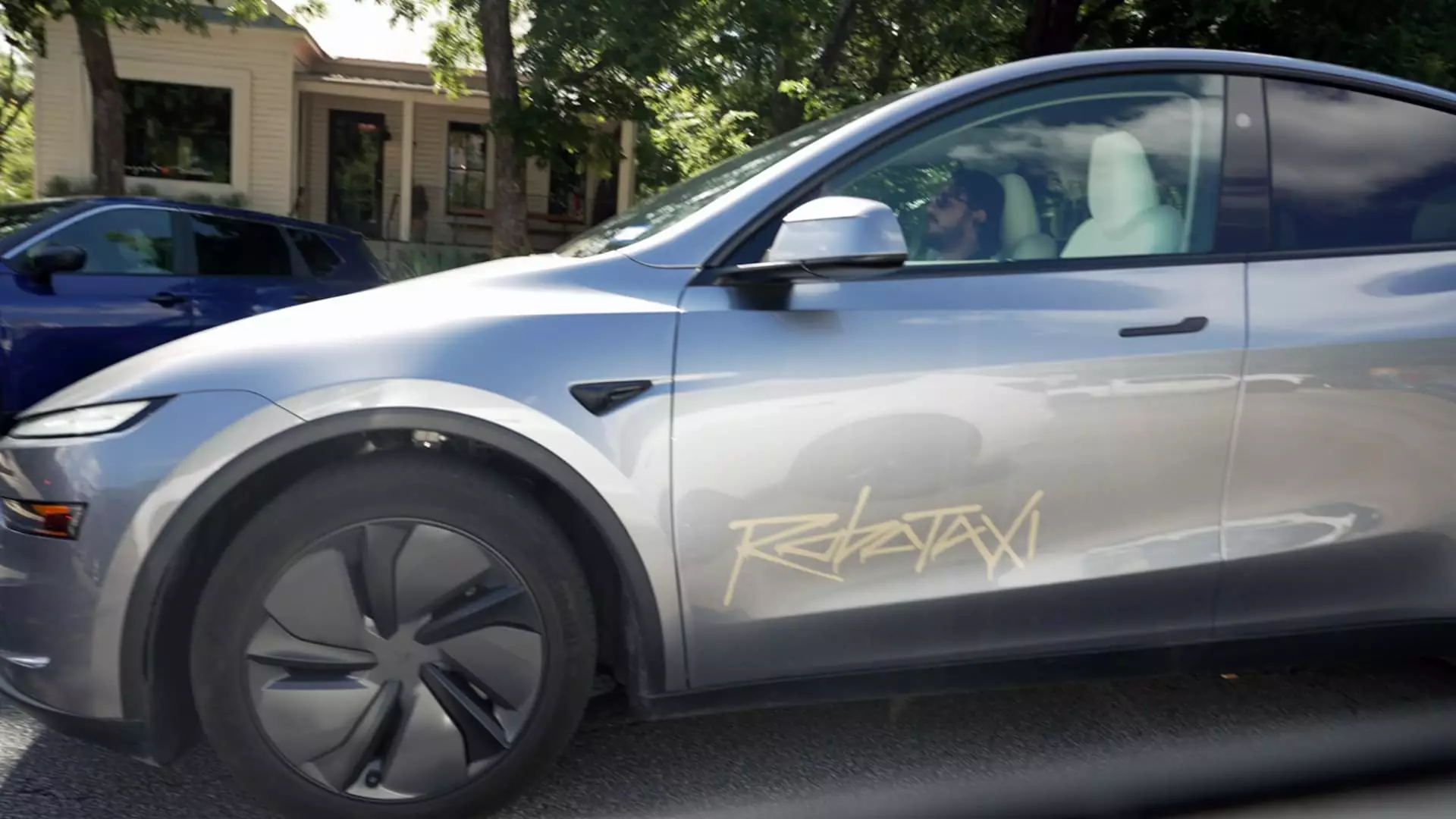Tesla’s latest push into autonomous vehicle deployment in Phoenix signals a bold, aggressive stride towards revolutionizing urban transportation. Yet, beneath this veneer of innovation lies a complex web of risks and skepticism. While Elon Musk touts his company’s reliance on camera-based AI as a clever cost-saving maneuver, critics—and increasingly, regulators—question whether Tesla’s approach genuinely prioritizes safety or merely seeks to outpace competitors like Waymo through sheer ambition.
This tension—between technological confidence and cautious oversight—reveals an unsettling truth: Tesla’s eagerness to deploy remains at odds with the regulatory environment and the concerns of safety advocates. History demonstrates that haste often breeds future liabilities. The incidents captured in Austin, involving Tesla’s Robotaxis recklessly dinging parked cars or violating road rules, underscore the potential dangers of an automaker rushing technology to market without rigorous testing. This situation embodies a broader debate: can corporate innovation thrive responsibly, or does pushy progress jeopardize public safety in pursuit of shareholder value or prestige?
Economic Viability Versus Ethical Responsibility
Tesla’s insistence on camera-only autonomous systems is driven by a desire to cut costs and democratize driverless technology. From Musk’s perspective, a cheaper system means more vehicles on the road, broader adoption, and ultimately, a societal transformation in how people commute. However, this economic argument cannot overshadow the ethical obligation to ensure these vehicles operate safely and reliably.
The absence of lidar sensors, which offer precise environmental detection, raises questions about Tesla’s readiness to handle unexpected hazards or adverse weather conditions. The company’s decision emphasizes affordability over comprehensive safety, suggesting a prioritization of market share over moral responsibility. Such a stance may unleash a Pandora’s box of potential accidents and legal liabilities, especially if these robotaxis are forced into urban environments they are not fully prepared to navigate.
Furthermore, Tesla’s approach risks creating a two-tiered society—where affluent early adopters gain access to cutting-edge mobility, while vulnerable populations bear the brunt of technical failures. The broader societal implications of rushing into driverless technology demand careful ethical reflection, yet Musk’s focus on rapid deployment appears to dismiss these complexities in favor of hype and publicity.
The Regulatory Realm and Public Trust
Tesla’s pursuit of autonomous vehicle approval in new markets like Arizona and California reveals an intense regulatory scramble. While Waymo has already established a substantial presence in Phoenix, Tesla’s delayed and sometimes contentious efforts to advance their own Robotaxi program raise questions about the company’s respect for oversight processes.
Legal challenges, such as California’s lawsuit alleging false claims about self-driving capabilities, reflect a deep skepticism around Tesla’s marketing practices. Such disputes erode public confidence and question whether Tesla is truthful about its technology’s maturity. As consumers and regulators scrutinize the driverless claims, Tesla’s reputation risks suffering further damage—particularly if incidents continue to surface, casting doubt over its safety claims and technological promises.
Additionally, Elon Musk’s optimistic forecasts—such as a rapid expansion to California or the Phoenix area—may be overly ambitious or driven more by hype than actual readiness. The regulatory environment is not a hurdle to be ignored but a vital safeguard that must be respected. Rushing through approvals without thorough testing jeopardizes not only public safety but also long-term trustworthiness.
Tesla stands at a crossroads: either it demonstrates that innovation can advance alongside responsibility or it risks becoming a cautionary tale of hubris. While the pursuit of affordable, widespread autonomous vehicles is a noble goal with the potential to transform urban life, it must not come at the expense of safety and integrity. The company’s aggressive expansion efforts, coupled with recent mishaps and regulatory battles, paint a picture of an industry in flux—one where moral and social obligations must guide technological ambition, not the other way around.
Balancing economic interests with societal good is no easy feat, especially in a realm as consequential as autonomous driving. Tesla’s current trajectory suggests a need for profound introspection—an acknowledgment that technological innovation must be anchored by rigorous safety standards and transparent practices. Only then can the promise of driverless vehicles serve the public interest without becoming a reckless gamble fraught with avoidable risks.


Leave a Reply